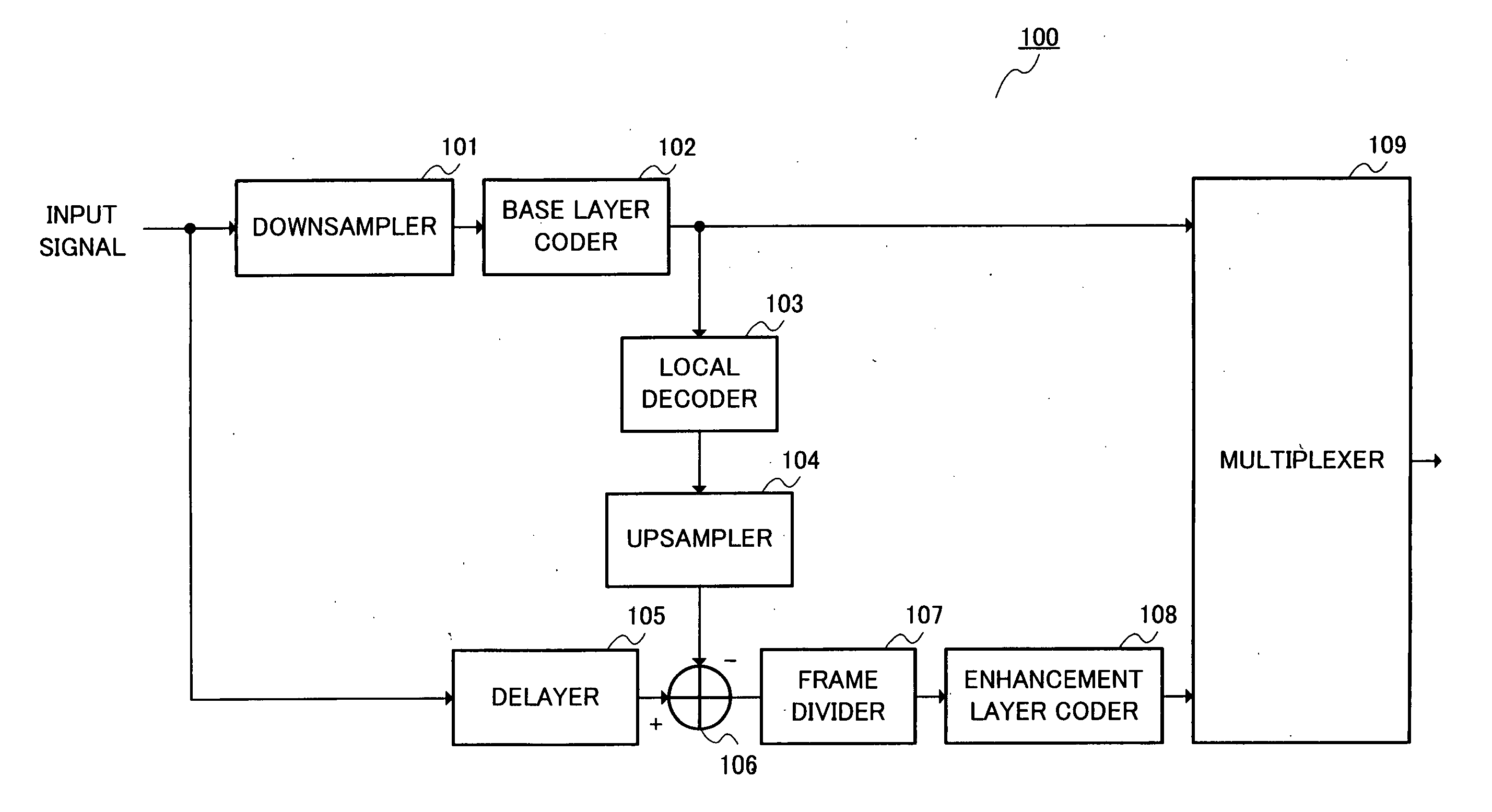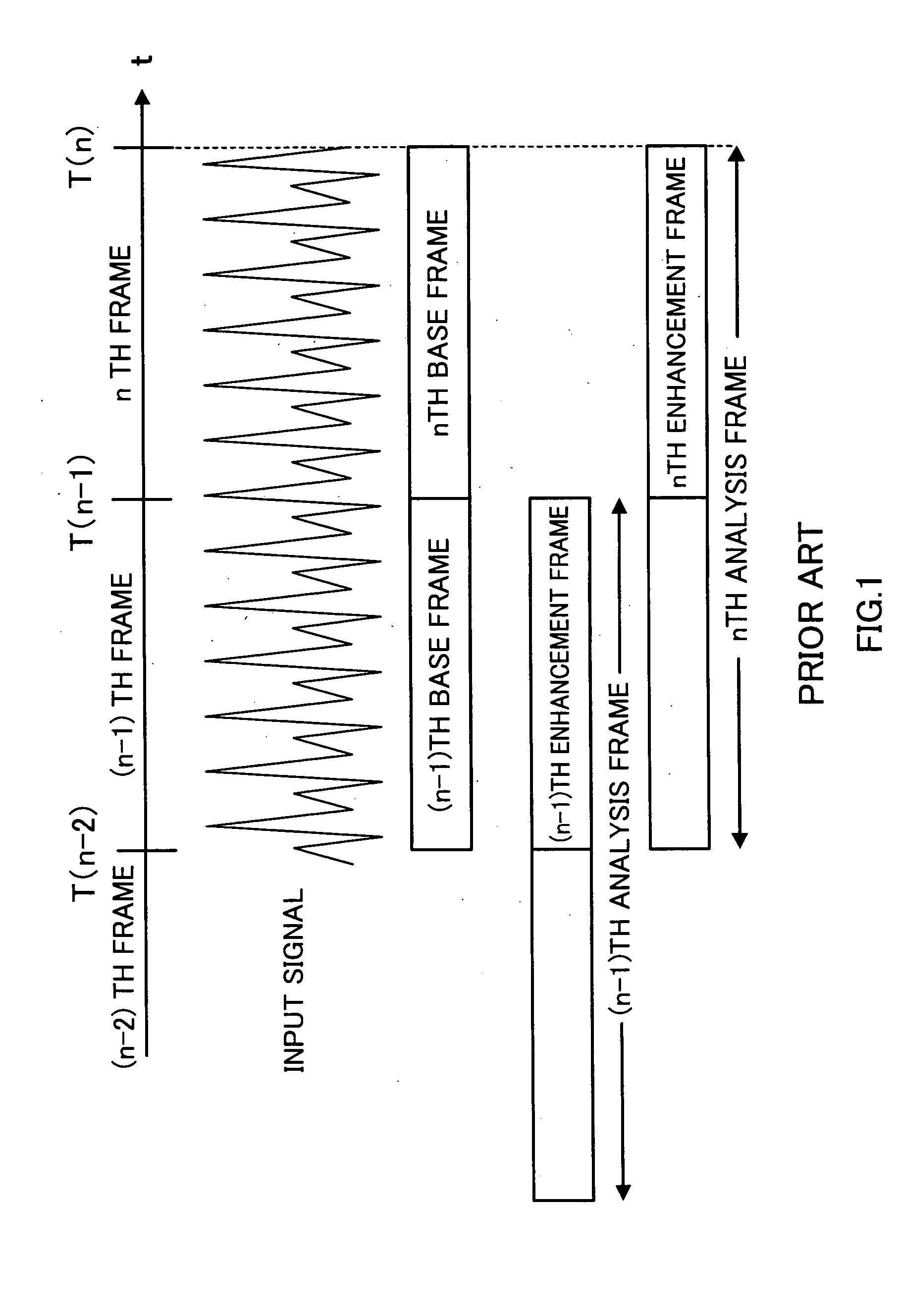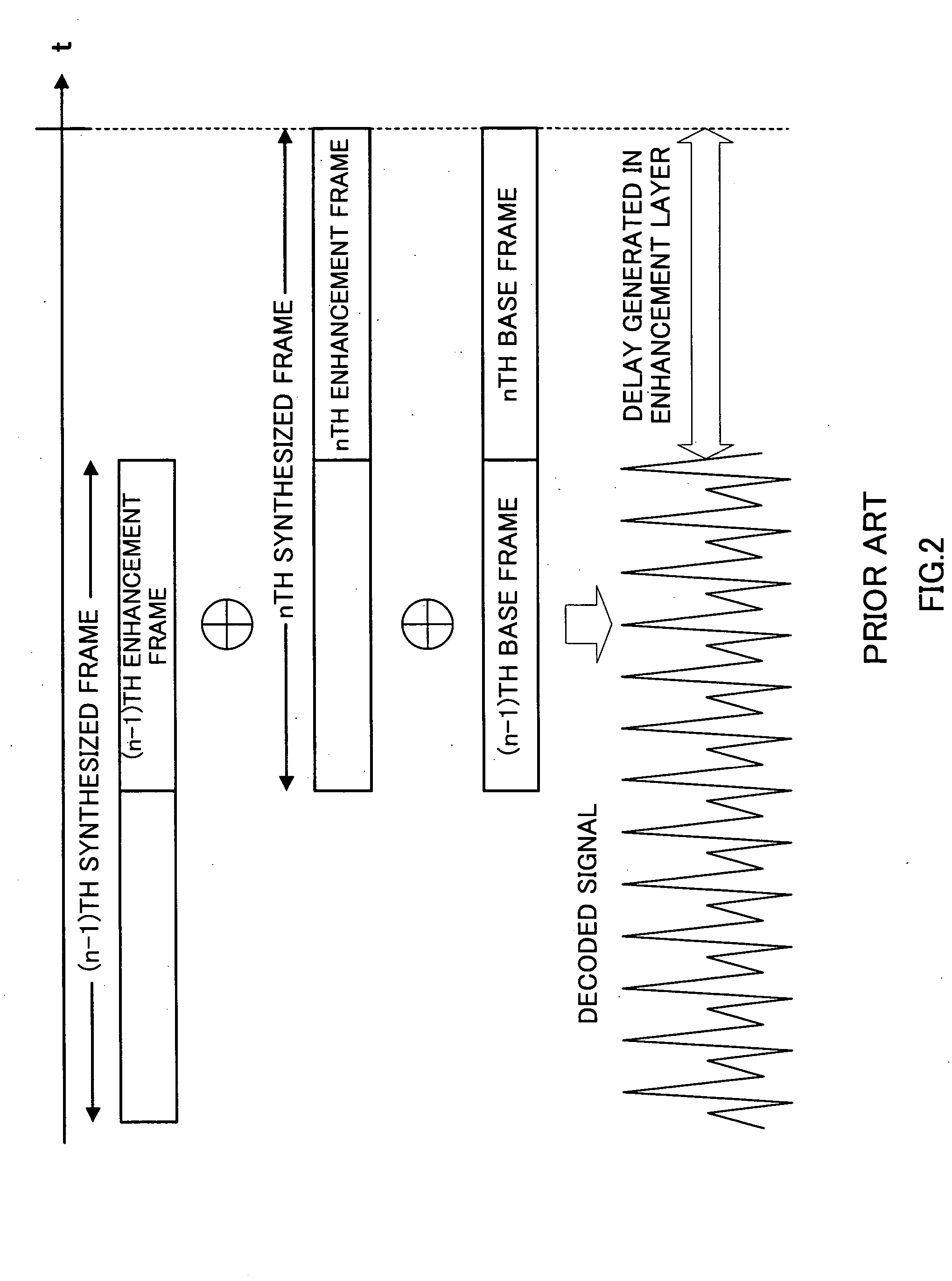Sound encoding apparatus and sound encoding method
- Summary
- Abstract
- Description
- Claims
- Application Information
AI Technical Summary
Benefits of technology
Problems solved by technology
Method used
Image
Examples
embodiment 1
[0052]FIG. 3 is a block diagram showing the configuration of an acoustic coding apparatus according to Embodiment 1 of the present invention. An acoustic coding apparatus 100 in FIG. 3 is mainly constructed of a downsampler 101, a base layer coder 102, a local decoder 103, an upsampler 104, a delayer 105, a subtractor 106, a frame divider 107, an enhancement layer coder 108 and a multiplexer 109.
[0053] In FIG. 3, the downsampler 101 receives input data (acoustic data) of a sampling rate 2*FH, converts this input data to a sampling rate 2*FL which is lower than the sampling rate 2*FH and outputs the input data to the base layer coder 102.
[0054] The base layer coder 102 encodes the input data of the sampling rate 2*FL in units of a predetermined base frame and outputs a first coded code which is the coded input data to the local decoder 103 and multiplexer 109. For example, the base layer coder 102 encodes the input data according to a CELP coding.
[0055] The local decoder 103 decod...
embodiment 2
[0083] This embodiment will describe an example where CELP coding is used for coding of the base layer. FIG. 9 is a block diagram showing an example of the internal configuration of a base layer coder according to Embodiment 2 of the present invention. FIG. 9 shows the internal configuration of the base layer coder 102 in FIG. 3. The base layer coder 102 in FIG. 9 is mainly constructed of an LPC analyzer 701, a perceptual weighting section 702, an adaptive codebook searcher 703, an adaptive vector gain quantizer 704, a target vector generator 705, a noise codebook searcher 706, a noise vector gain quantizer 707 and a multiplexer 708.
[0084] The LPC analyzer 701 calculates LPC coefficients of an input signal of a sampling rate 2*FL and converts these LPC coefficients to a parameter set suitable for quantization such as LSP coefficients and quantizes the parameter set. Then, the LPC analyzer 701 outputs the coded code obtained by this quantization to the multiplexer 708.
[0085] Furthe...
embodiment 3
[0102] This embodiment is characterized by the use of transform coding whereby an input signal of the enhancement layer is transformed into a coefficient of the frequency domain and then the transformed coefficients are encoded. The basic configuration of an enhancement layer coder 108 according to this embodiment will be explained using FIG. 12. FIG. 12 is a block diagram showing an example of the internal configuration of an enhancement layer coder according to Embodiment 3 of the present invention. FIG. 12 shows an example of the internal configuration of the enhancement layer coder 108 in FIG. 3. The enhancement layer coder 108 in FIG. 12 is mainly constructed of an MDCT section 1001 and a quantizer 1002.
[0103] The MDCT section 1001 MDCT-transforms (modified discrete cosine transform) an input signal output from the frame divider 107 to obtain MDCT coefficients. An MDCT transform completely overlaps successive analysis frames by half the analysis frame length. And the orthogona...
PUM
 Login to View More
Login to View More Abstract
Description
Claims
Application Information
 Login to View More
Login to View More - R&D
- Intellectual Property
- Life Sciences
- Materials
- Tech Scout
- Unparalleled Data Quality
- Higher Quality Content
- 60% Fewer Hallucinations
Browse by: Latest US Patents, China's latest patents, Technical Efficacy Thesaurus, Application Domain, Technology Topic, Popular Technical Reports.
© 2025 PatSnap. All rights reserved.Legal|Privacy policy|Modern Slavery Act Transparency Statement|Sitemap|About US| Contact US: help@patsnap.com



